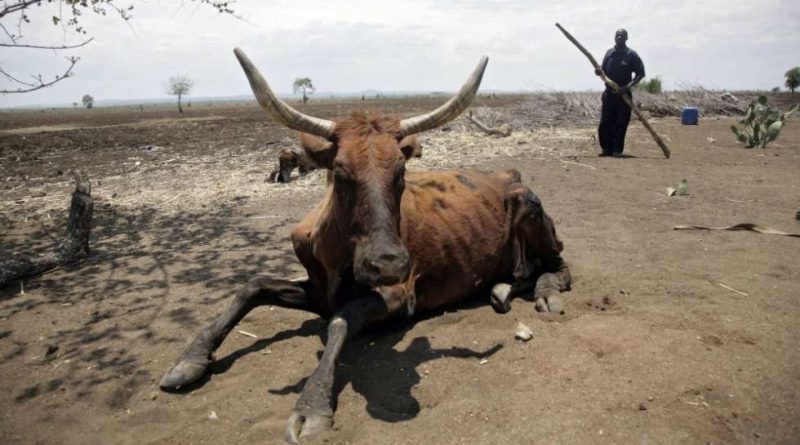2 Charts: Zimbabwe: Black politicians lied about drought – seizing farms destroyed the GDP
(005875.811-:E-000062.43:N-AC:R-SU:C-30:V)
[This is from a website where a white man was writing in 2006 when Mugabe was seizing the farms. Look at his charts, etc. Mugabe continued to seize the farms after 2006. So this is incomplete but it will give you the picture of what happened and how much it harmed the country. Jan]What About the Droughts?
Reports by the UN, IMF, and U.S. Department of Agriculture have argued that Zimbabwe’s devastating food shortages since 2000 are largely attributable to “severe drought”–a line that President Mugabe and other government officials have only been too happy to parrot. However, the reports in question relied either on unreliable, secondhand information or on data from a small sample of rainfall stations.
Data from all of Zimbabwe’s 93 rainfall stations indicate that the so-called “drought” of 2001-2002 was in fact just 22 percent below the country’s 50-year average, and that rainfall in subsequent years was much closer to the norm. Indeed, as Figure 1 shows, in the past 40 years, there have been 12 episodes with lower rainfall than in 2001-2002, yet none of these provoked an economic collapse similar to what Zimbabwe now faces. Moreover, until the recent disastrous land reform, Zimbabwe benefited from extensive irrigation infrastructure, including more than 10,000 reservoirs, that helped to maintain agricultural production during the periodic dry spells.
Figure 1

The remarkable correlation between GDP growth and rainfall sharply disconnected in the late 1990s as seen in Figure 2. As the economy imploded after 2000, rainfall briefly dipped in 2001/02, and then resumed close to or above its average levels. Reports from FEWS.net report average or above average rainfall in more recent years.
Figure 2

Source: https://www.cgdev.org/page/what-about-droughts
Video: JEWS101: Whites colonised Blacks; Jews colonise Whites! Introduction to the Jewish
This is based on an email I wrote to a retired senior military officer I know, who is also a Christian.
British author asks: What did we win in WW2? 10 Myths (lies) the British believe about WW2!
Im delighted to see the British asking themselves questions about the utterly stupid war they fought, exclusively for the benefit of world Jewry!
Video & Audio: South African Jews worked secretly to destroy White rule
We take a look at the testimony of the Scottish Member of Parliament, George Galloway, who was an enemy of the Whites of South Africa and Apartheid. He travelled secretly to South Africa during Apartheid.

